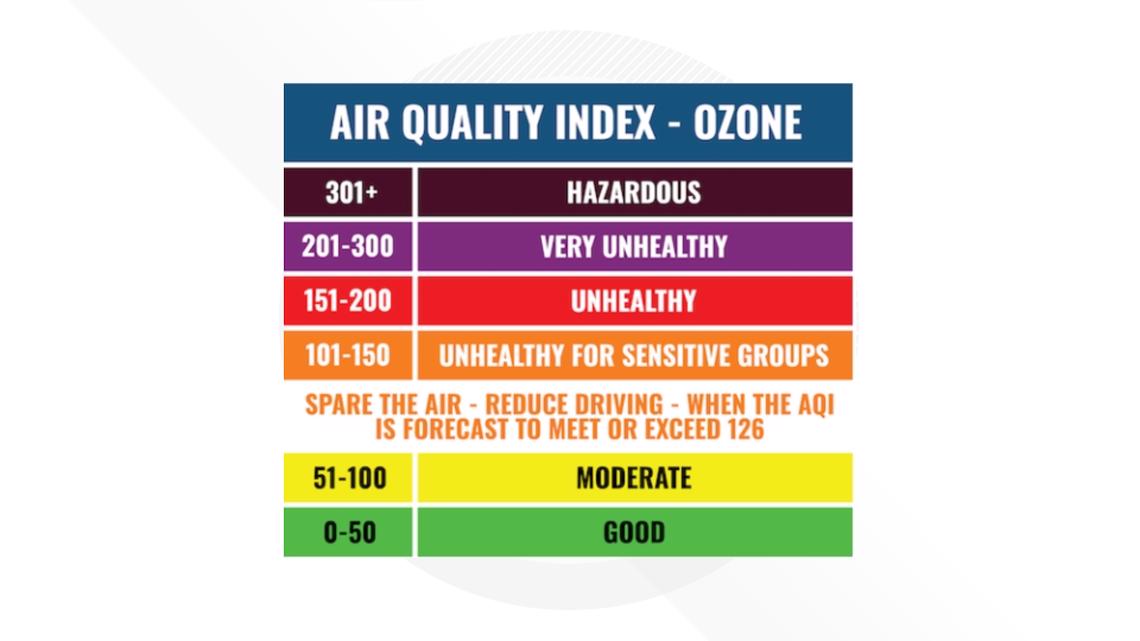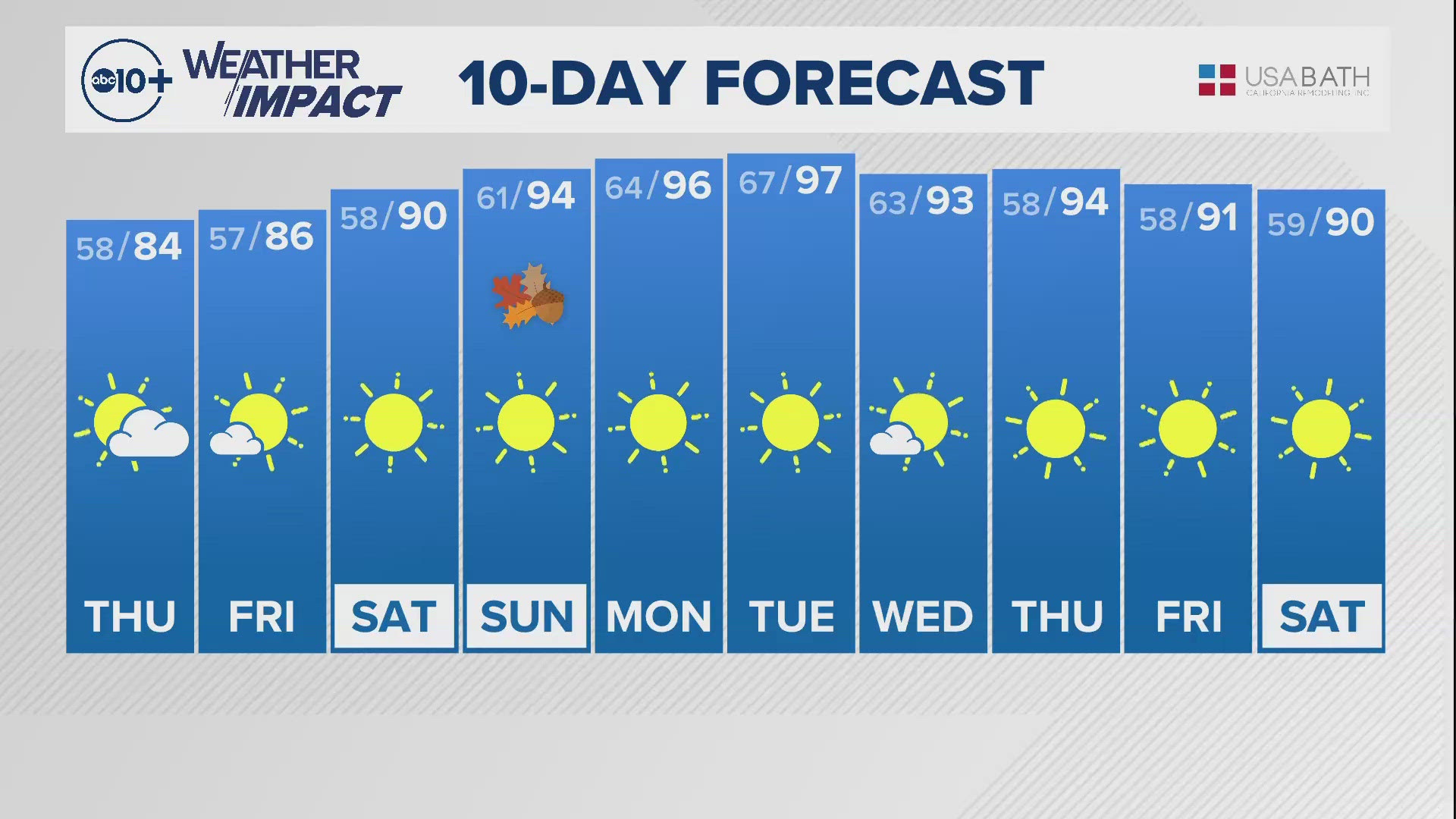SACRAMENTO, Calif. — The first Spare the Air day has been issued for the Sacramento region on Tuesday as ozone levels will be unhealthy for sensitive groups.
The air quality index, or AQI, is forecast to be 129 tomorrow, enough to reach the threshold for a spare the air day.
RELATED: Sacramento Weather Forecast
With hot temperatures expected as the high pressure ridge builds into the area and smoke from the Six Rivers fire complex moves into the area, conditions will be ripe to promote elevated levels of ground-level ozone formation, or smog. The high pressure system is associated with light winds and decreased atmospheric mixing, so pollutants have nowhere to go but the valley floor.


There's plenty of confusion on the term ozone. While stratospheric ozone is beneficial by blocking harmful UV rays, ground-level ozone is the product of chemical reactions between oxides of nitrogen (NOx) and volatile organic compounds (VOC). This happens when pollutants "emitted by cars, power plants, industrial boilers, refineries, chemical plants, and other sources chemically react in the presence of sunlight," according to the EPA.
Elevated exposure is unhealthy and potentially dangerous, especially to those with asthma or other health conditions. It is recommended to limit time outdoors on Spare the Air days, especially in the afternoon and early evening when conditions are worst.
Officials say that the best way to help on Spare the Air days is to limit driving, fill up the car in the morning, carpool, and reduce the use of gas-powered outdoor equipment, like lawnmowers. Vehicles and other mobile sources, including trucks, locomotives, buses, motorcycles, agricultural equipment and construction equipment, contribute more than 70% of the oxides of nitrogen (NOx) and volatile organic compounds (VOCs) that form ground-level ozone air pollution, according to sparetheair.com.
WATCH ALSO:

























